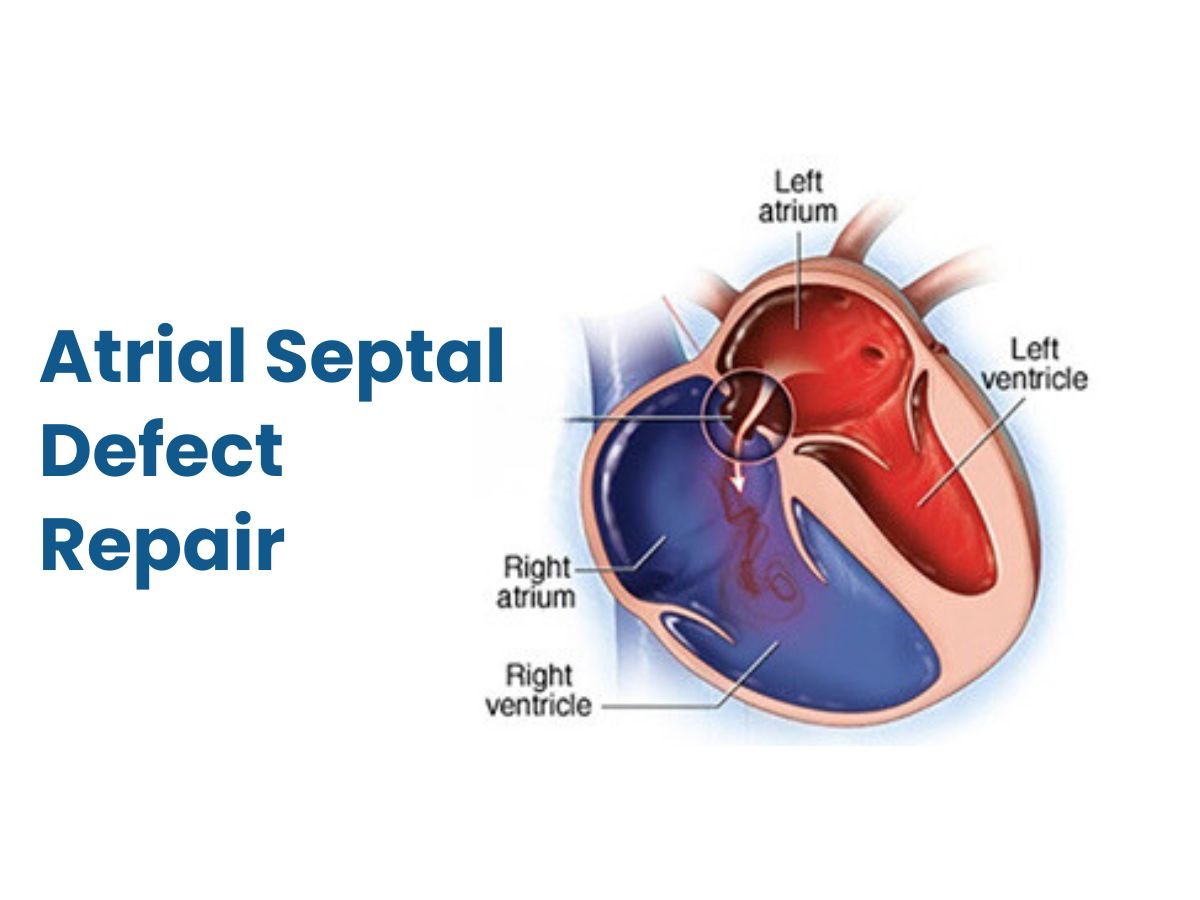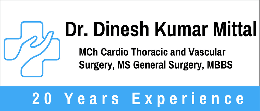Understanding Atrial Septal Defect Repair: A Comprehensive Guide

An atrial septal defect (ASD) is a congenital heart condition where a hole exists in the septum (the wall) that separates the heart’s two upper chambers, or atria. This defect allows oxygen-rich blood from the left atrium to flow into the right atrium, mixing with oxygen-poor blood and causing the heart to work harder than normal. Over time, an untreated ASD can lead to serious complications like heart failure, arrhythmias, and pulmonary hypertension. Fortunately, Atrial Septal Defect Repair Surgery is a common and effective treatment to correct the defect and restore normal heart function.
Dr. Dinesh Kumar Mittal, a respected Cardiothoracic and Vascular Surgeon, states, “Atrial Septal Defect is a manageable condition when diagnosed early, and timely surgery can prevent lifelong complications. At our centre, we use the most advanced techniques to ensure successful outcomes for our patients. I encourage anyone with a congenital heart defect to seek prompt evaluation and treatment for the best possible health.”
This blog will delve into common questions regarding ASD repair surgery, types of ASDs, costs, symptoms, and the long-term effects of repair. In this blog, we will explore everything we need to know about ASD and its treatment.
What is Atrial Septal Defect Repair Surgery?
Atrial Septal Defect Repair Surgery is a procedure aimed at closing the hole in the atrial septum to prevent the abnormal mixing of blood between the heart’s atria. There are two primary methods used to repair an ASD:
- Minimally Invasive Catheterization: For smaller ASDs, a minimally invasive approach is often employed. A catheter is guided to the heart by inserting it through a vein in the groin.
- Open-Heart Surgery: Larger defects or more complex cases may require open-heart surgery. In this procedure, the surgeon makes an incision in the chest and uses either stitches or a patch to close the hole directly. This method is also used if the defect is located in a difficult-to-reach area of the heart.
Who Needs ASD Repair?
Not all ASDs require immediate surgery. Small ASDs may close on their own during childhood, while moderate to large defects may persist and eventually cause symptoms. If the defect is large enough to cause significant shunting of blood or if it leads to symptoms or complications like arrhythmias, heart enlargement, or pulmonary hypertension, surgical intervention is recommended.
What are the 3 Types of Atrial Septal Defects?
There are three primary types of atrial septal defects, categorized by their location within the atrial septum:
- Secundum ASD: The most common type, accounting for about 75% of cases, occurs in the middle of the atrial septum. Most secundum ASDs are eligible for minimally invasive catheter closure.
- Primum ASD: Located in the lower part of the atrial septum, this type is often associated with other congenital heart conditions, such as abnormal valves, and typically requires open-heart surgery.
- Sinus Venosus ASD: This rare form is located near the junction of the superior or inferior vena cava and the right atrium, and it usually requires open-heart surgery.
What are the Symptoms of Atrial Septal Defect?
Symptoms of an atrial septal defect can vary depending on the size of the defect. Small ASDs may be asymptomatic, while larger defects can cause:
- Shortness of breath, especially during exertion
- Fatigue
- Heart palpitations
- Swelling in the legs, feet, or abdomen
- Frequent respiratory infections
- Heart murmurs
Untreated ASDs can lead to complications like pulmonary hypertension and heart failure.
One of Dr. Mittal’s patients shared, “I noticed a decline in my energy levels and experienced breathlessness. After Dr. Mittal explained my condition and the procedure, I felt confident moving forward with surgery. The recovery was very smooth, and I feel a lot better now.”
What is the Cost of Atrial Septal Defect Repair Surgery in India?
The cost of ASD repair surgery in India can vary, with minimally invasive procedures typically costing less than open-heart surgery. Factors influencing cost include:
- Type of surgery
- Geographic location
- Surgeon’s expertise
- Preoperative and postoperative care
The estimated cost ranges from INR 2,50,000 to INR 5,00,000 (USD 3,000 to USD 6,000).
What are the Long-Term Effects of Atrial Septal Defect Repair?
Long-term outcomes after ASD repair are generally excellent, especially when the procedure is done early. Benefits include:
- Improved heart function
- Reduced risk of arrhythmias
- Enhanced exercise capacity
Some patients may need follow-up care to monitor for complications like residual shunts or arrhythmias.
What is the Life Expectancy After ASD Repair?
Life expectancy post-ASD repair is typically normal, particularly if surgery occurs early and there are no complications. Children grow normally, and adults often see significant quality-of-life improvements. Regular follow-ups and a heart-healthy lifestyle are crucial for optimal outcomes.
FAQs
1. What should I expect during the recovery period?
Recovery varies; minimally invasive patients may return to normal activities in a few weeks, while open-heart surgery may take 6 to 12 weeks.
2. Are there any lifestyle changes I should make after surgery?
Yes, adopting a heart-healthy lifestyle with regular exercise, a balanced diet, and avoiding tobacco and excessive alcohol is essential.
3. Can ASDs recur after repair?
Recurrence is rare, but some patients may experience a small residual shunt requiring monitoring.
4. What are the risks associated with ASD repair surgery?
Potential risks include bleeding, infection, arrhythmias, and reactions to anaesthesia, with a slight chance of residual shunting long-term.
5. What is the age limit for ASD repair surgery?
There is no strict age limit for surgery; depending on the individual’s condition and health, it can be performed at any age.
Explore more blogs: Is Pacemaker Implantation Safe and Effective for Children?
